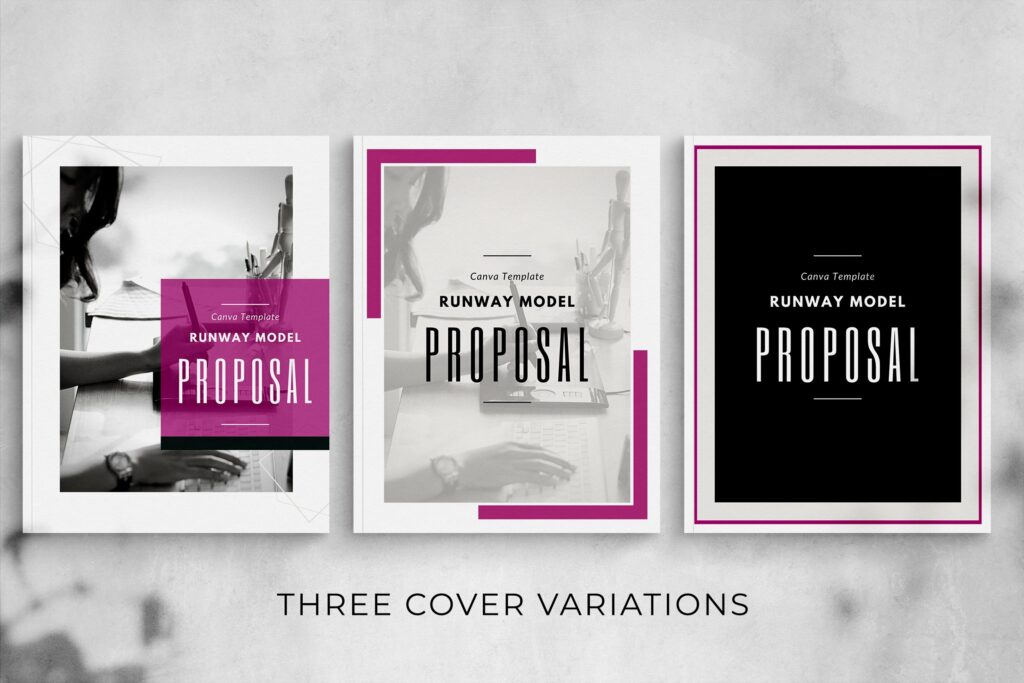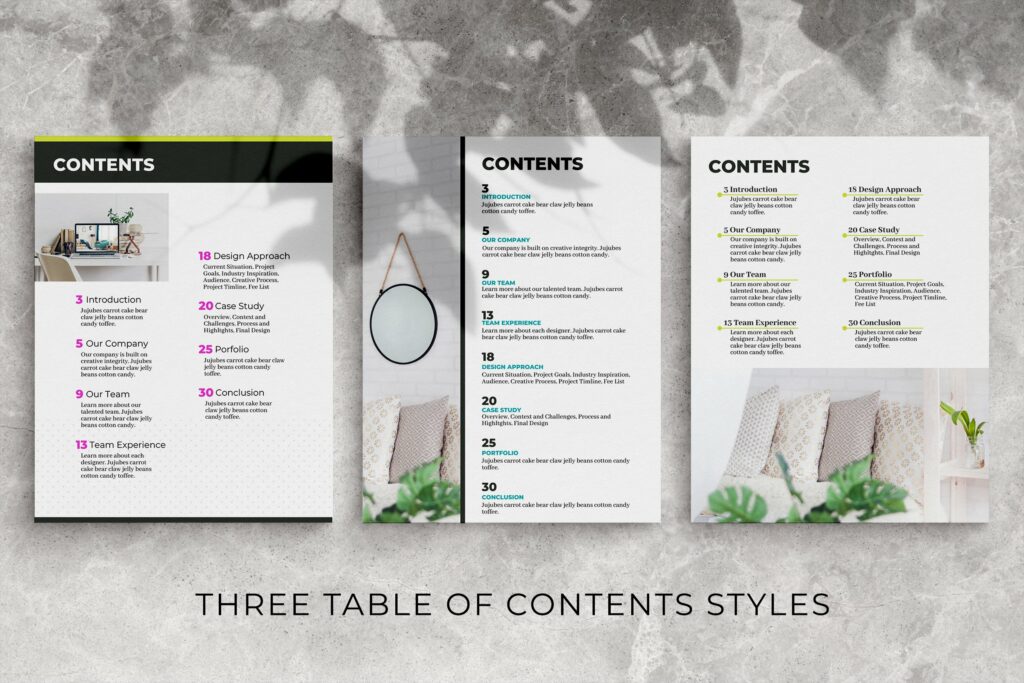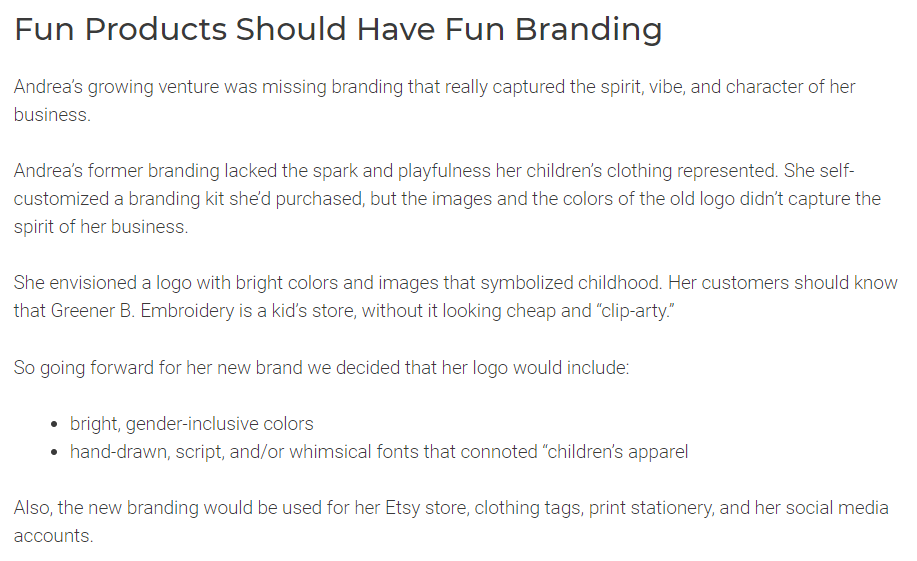Learn the Formula to Win Your Dream Clients
I remember when I had to write my first proposal. I had no clue what I was doing. I scoured the internet looking for some sort of guidance. Eventually, I found some help from which I cobbled together my first proposal. I typed it up in Word and sent it as a PDF. It had all of the basics I’ll share with you here—but none of the style.
Freelancers are brave people. When faced with our own lofty goals, we have to have faith that we can meet those goals and carve our own pathways. Often, it’s a lonely journey. Added to that pressure of sustaining a livable income is in finding and acquiring clients.
When you first start out, you might take any client, anyone who says they’ll pay you. But at some point, you realize you don’t want to work with just anyone. You want that dream client, the one who knows what they want, loves your work, and pays you promptly.
And once you feel like you’ve identified that dream client, the one who you connect with professionally, whose project is right up your alley, you are then faced with the task of creating a proposal that will knock their socks off.
Sending out design proposals to potential clients is stress-inducing and nerve-racking. But I created a formula that will get you well on your way to winning your dream client and scoring your dream project with the following ten steps.
Not every step or proposal element will be necessary for every freelancer or every project you go after. But this framework will give you the structure you need to craft an outstanding proposal that will get you noticed and closer to landing the work you love.
1. Compelling Cover Photo
It goes without saying that a compelling cover photo for your proposal is essential. It’s the first thing your dream client sees. To win your dream clients, your cover photo should be on-brand and visually captivating. It should capture the essence of your expertise as well as speak to your client’s expectations.
You can use your own images from your previous projects or stock photos that are relevant to the proposal. I like using Unsplash because of their free, high-quality photos. I also really love Haute Stock for its subscription-based, premium stock photography geared specifically to women entrepreneurs.
Along with the all-important cover image, remember to include your name (or company name), the name of your client, the name of the project, and the date.
Try a few variations of your cover photos:
- Full-bleed image with text
- Cropped image with white space
- Image with an overlay

Whichever type of design you use, just make sure your cover images pack a visual punch along with including any other information needed to clarify and identify your proposal.
2. Table of Contents
In this digital age, some might think that a written table of contents (TOC) is outdated or old-fashioned. Even if your proposal is delivered via PDF, a TOC is still useful, because your client will very likely want to print the document. Also, if you send your proposal as a PDF, you can make it interactive with bookmarks. Note, you will need a PDF editor such as Adobe Acrobat Pro to accomplish this.
The TOC should clearly delineate each section of your proposal. The names of each section should be simple, clean, and include the correct page numbers. Keep the TOC straightforward, easy to understand, and relevant to the information requested by the client.

3. Cover Letter
The cover letter is one place where you can directly communicate with your potential clients in a more personable manner. This letter should address the client, your interest in the project, your understanding of the project, and why you or your company is the right fit. You can briefly mention your work/involvement in past similar projects and the qualifications of you and your team.

Don’t skimp on this step. It might not be as sexy as your portfolio, but this is your chance to showcase how your unique blend of skill and experience meets the key requirement of the client’s project. In the cover letter, you can show a clear link through your knowledge, expertise, and abilities. Your dream client should hear your voice. They should get a good sense of your style and personality from this letter. Though personable, it should still be professional in tone and convey the level of expertise you can bring to the project.
4. Firm Profile
The company philosophy—also called a company philosophy—should include the main focus of your business or services, and a brief history. It should also include your values and mission. If you’re a solopreneur or freelancer, think of this as your “About Me” page, similar to what you would find on a website. In fact, you can even title this page as mentioned above or “About [Your Name].”If you work for yourself, there is no need to pretend you are a company or a part of a team. Make this section appropriate to the current state of your business or service.

A company philosophy is a good place to add impressive statistics, notable company milestones, and accomplishments. This can include certifications, awards, number of clients, number of projects by category or market, company address, and other contact information.
The section should give the client a clear understanding of your expertise and fitness for the project.
5. Team Overview
The team overview provides a great opportunity to show off your team (if more than one person is going to work on the project). The Team Overview is also great if you have a tight page limit and don’t have enough space to include full-page resumes.
Eye-catching team overviews will include images of each team member. We live in a very visual era, and people want to know who they’re working with! Simple headshots of your team members will put faces to names and give the client a clearer picture of how they could potentially work with you. Along with the headshot, include a brief bio of your team members that lists the specific skills and expertise they will bring to your client’s project. Don’t forget to add the team members’ roles that they would assume on the client’s project.
6. Resumes
Much like the team overview, your resume is your opportunity to win your dream clients by showcasing your awesome skills, work experience, and accomplishments, but in greater detail. Your resume should be targeted to the project you are applying for. If your dream client wants web design for a photography site, you should probably leave off your interior design experience. Because it won’t be relevant to the project and will likely not sell the client on your expertise.
We live in a visual world. Even though it’s customary to omit your headshot on your resume, it’s pretty common to include your headshot on your proposal resume. Make sure your headshot and the headshots of your team are clear, high-resolution, and engaging without a lot ao background “noise” and distraction. Fuzzy, low-resolution images taken in poor lighting, won’t reflect well on your presentation. A simple smile with a clean and non-distracting background works best.

- Name
- Role assumed for project
- Headshot image (as described above)
- Brief bio
- Work/Project Experience relevant to the client’s project
- Education
- Honors and awards
- Contact info
- Social media handles
- Key skills list/graphic/indicator
7. Project Approach
A solid project approach is how you win your dream clients with your deep knowledge of their industry and their project’s specific needs. Typically, a project approach will include the following key elements:
- Current Situation
- Project Goals
- Industry Inspiration
- Audience
- Creative Process
Conduct research before you dig into the approach by leading a discovery session with your client. Once you have had this conversation and have mined your potential client for some useful nuggets, you can get to work crafting your approach. Your project approach should reflect what you have already gleaned from the client while adding in your understanding of the project and specific strategies for how you plan to address the needs and desires of your dream client and fulfill the project objective.
Now let’s dive into the five key elements of an enticing project approach.
Current Situation
Your dream client wants to know that you have a firm understanding of their current situation and what kind of transformation they are after.
For example, one of my previous clients was a social media consultant. She had a WordPress.com account and some semblance of a website, but she was ready to take her consultation services to the next level and wanted a website that would reflect where she was going with her business.
Her situation involved many factors. She was on a free hosting platform but wanted to move to a self-hosted solution so she could grow her site as her business grew. She wanted a website that reflected her branding and visual identity.
During our discovery session, I learned where my client was at the moment in time, and where she wanted to go with her business, her ultimate transformation.
Project Goals
Clearly state the end result transformation your client is seeking and how you can meet those goals. For my social media consultant client, I stated that her website would be created using WordPress. The site would 1) include a blog to update her audience of current articles, 2) include a convenient newsletter opt-in forms so visitors can subscribe to her email list, 3) encourages her audience to connect with her via social media, 4) highlights her expertise in social media marketing, and 5) display her colorful and bold style.
Industry Inspiration
Here you might present some precedent imagery, a mood board, or projects that most effectively meet the goals your dream client wants to achieve. This section can explore trends in the industry that applies to your client’s project.
Audience
Demonstrate an understanding of your client’s target audience. Who are your client’s customers? Who are the stakeholders? Focus on the target audience’s behaviors, buying habits, trends by demographics, etc. This is a great opportunity to include more visual data and infographics. Who are your client’s customers? Who are the stakeholders?
Creative Process
Here’s where you want to go into more detail about how you will actually achieve your client’s goals and objectives. Describe your creative process in a way that gives your client confidence in your creative vision. A checklist is a straightforward way to present this information. Or you could go a more infographic, flowchart route.
8. Case Study
While the project approach gives your dream client a hypothetical scenario of your problem-solving, design, and project management skills, the case study provides real-world examples of how you shepherd a project from beginning to end. The case study format can vary depending upon your style and preferences. Generally include a project overview, context and challenges, the process and highlights, and your final design.
Let’s look at one of my past clients as an example.
An Etsy shop owner who created and sold embroidered children’s apparel came to me for branding services. She already had a successful Etsy business that was attracting more and more customers and generating a growing income for her and her family. Because of her shop’s increased growth she decided it was time to have a cohesive visual brand that would reflect the heart and character of her business.
At that time, her branding came from a pre-designed logo package she purchased off of the same platform. She wanted a custom visual identity that captured the essence of her business and growing success. I was able to help her craft a new logo and other branding elements that breathed new life into her shop.
Overview
The case study overview gives a summary of your client’s current status.

Context and Challenge
The context and challenge section focuses on issues, project goals, and objectives.

Process and Highlights
Describe the steps and major milestones in your case study.

Final Design
Show your potential clients the final outcomes of your past project and the transformation for the previous client.


9. Project Timeline and Deliverables
Your dream client wants to know if you can complete their project on time and within budget. Also, it’s good practice to delineate what’s expected from each party. Including a project timeline helps demonstrate your time management and project management capabilities. It also demonstrates your commitment to the project. We all work within the constraints of time. Your dream client wants to know you are respectful of their time and can work within a reasonable time frame to complete the project.
It helps to clearly spell out what items you are responsible for completing and what your dream client is responsible for providing, such as timely feedback or access to website accounts.
A list of deliverables should include items, files, and other things at certain milestones. And it should list what you are not going to produce, anything thing that is out of the scope of the project.
For example, if you are a graphic illustrator, you might want to exclude writing or editing from your services. This way, your client will not expect you to perform duties that are either beyond your expertise, time constraints, or personal preferences. You need to be upfront about this from the jump to avoid misunderstandings and scope creep.
10. Fee List/Table
You might also be asked to include a list of fees for your work should you accept the project. It can be as simple as an itemized list with a corresponding price. If you expect to be paid by the hour, that should go on your price list. If you have fixed rates for your services, you should indicate that here as well.
Next Steps
Writing your design proposal can be daunting. Use this guide as a framework to help you break down each component of the process. It will help you craft a proposal that will knock the socks off of your dream clients.


